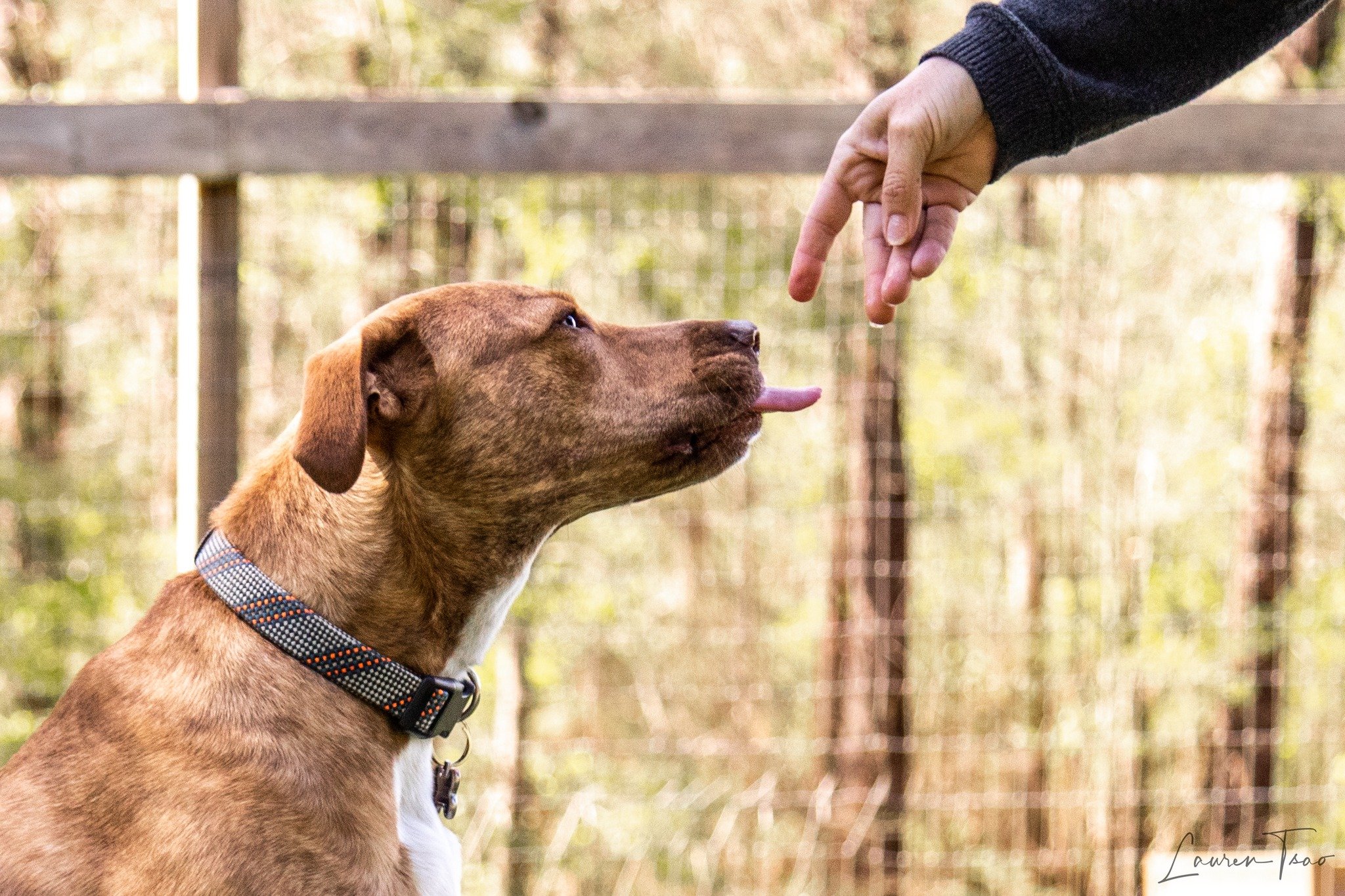
Dog Training & Behavior Tips

“I Don’t Have Time”: When Life Feels Too Full for Dog Training
“I don’t have time” is one of the most heartbreaking things a behavior consultant can hear. Making time before things fall apart is one of the kindest things you can do for your dog and yourself. Behavior struggles are more than just inconvenience. They’re quality of life concerns. And small, doable changes really can make a big difference.

"He Seems Fine to Me!" Why Active Dogs Can Still Have Medical Issues
Does your dog’s energy and playfulness mean they’re perfectly healthy? Not always. Dogs are masters at masking discomfort, often staying active, even increasing their activity, to distract themselves from pain. This post explores why your dog’s boundless energy might not tell the full story, the subtle signs of underlying issues you might be missing, and why addressing their health first is key to effective training.

Your Dog Deserves the Best: Choosing the Right Vet and Knowing When to Switch
In this blog, we discuss the importance of selecting the right veterinarian and knowing when to seek a second opinion to ensure your dog's health and well-being. I share the story of Oakley, my dog diagnosed with discospondylitis after persistent advocacy and seeking a second opinion, highlighting the value of trusting your instincts as a dog owner. I offer practical steps for choosing a vet, including assessing their communication style, expertise, and ability to address your dog’s unique needs.

Understanding the Prevalence of Behavior Problems in Dogs – Insights from the Dog Aging Project
The Dog Aging Project (DAP) provides groundbreaking insights into the prevalence and scope of behavioral challenges in dogs. Analyzing data from over 43,000 dogs, this study found that nearly all dogs (99.12%) exhibit moderate-to-serious behavioral issues, ranging from aggression and anxiety to separation-related behaviors and housesoiling. The blog post emphasizes the importance of early recognition and intervention to address these issues. Behavioral problems often reflect deeper emotional, physical, or environmental concerns, requiring a “big picture” approach. Through tools like behavioral assessments, tailored training plans, and collaboration with veterinarians, owners can address their dog’s needs effectively.

Unpacking Dog Aggression Towards People: Insights from Behavior Consultations
This blog post delves into the complexities of aggression in dogs, highlighting how stress, fear, and anxiety often underlie this behavior. Drawing on recent research, it emphasizes the importance of recognizing early stress indicators like yawning, trembling, and excessive attention-seeking as precursors to aggressive responses. The blog discusses the detrimental impact of punitive measures, which can exacerbate anxiety and escalate aggression, and instead advocates for trust-based, positive reinforcement methods.

Understanding Behavioral Challenges in Dogs with Idiopathic Epilepsy
This blog post explores how idiopathic epilepsy (IE) in dogs affects not only their physical health through seizures but also their behavior and emotional well-being. A recent study highlights that dogs with IE often exhibit heightened excitability, attention-seeking behaviors, and cognitive impairments, which can be influenced by the neurological condition and its treatments.

Dog Pain and Behavior: How to Identify the Signs and Take Action
This blog post explores a recent study published in the Journal of Veterinary Behavior, which examined how well dog owners can identify pain-related behaviors in their pets. The study revealed that many owners struggle to recognize subtle signs of discomfort, particularly in older dogs where behaviors may be mistaken for normal aging.

Why is My Dog Aggressive Towards Other Dogs?
Aggression towards other dogs is often a complex behavior influenced by a variety of factors, including fear, frustration, physical discomfort, and environmental triggers. This blog post delves into the common causes of aggression and how to recognize early warning signs.

Classical Conditioning and Your Dog: Understanding How It Shapes Behavior
This blog post explores the concept of classical conditioning and how it influences dog behavior. Classical conditioning, first studied by Ivan Pavlov, explains how dogs (and all animals) can learn to associate neutral stimuli, like sounds or objects, with meaningful outcomes, such as rewards or discomfort…

Helping Reactive Dogs: When Emotional Arousal Is Linked to Pain
This blog post explores how emotional arousal, commonly referred to as "reactivity," in dogs can often be linked to underlying pain or discomfort. Emotional arousal is characterized by heightened responses to stimuli, such as excessive barking, lunging, or hypervigilance, which can interfere with a dog’s ability to calm down…

It Takes a Team: Why Your Dog’s Training Needs Everyone on Board
We explore the challenges of managing dog training responsibilities when one person in the household carries the majority of the "mental load"; the invisible burden of managing tasks like feeding, walking, and training, as well as tracking progress and implementing solutions. We discuss the importance of involving all family members in training, highlighting the risks of inconsistent messaging, increased stress for the dog, and burnout for the primary caregiver.

When Thunderstorms Hurt: Understanding the Link Between Pain and Phobia in Dogs
This blog post explores the connection between discospondylitis, a painful spinal condition in dogs, and the sudden development of thunderstorm phobia in three case studies, including my own dog, Oakley. Diagnostic challenges, including the limitations of X-rays, are discussed. Treatment, involving antibiotics, pain management, and reduced activity, led to behavioral improvements in all three dogs, though recovery timelines varied.

Can Dogs with Chronic Pain Experience the “October Slide”?
This blog post explores the concept of the "October Slide" and its impact on dogs with chronic pain conditions. The "October Slide" refers to the worsening of chronic pain symptoms during colder months, often starting in October, due to environmental factors such as cooler temperatures, damp weather, and reduced daylight. These changes can lead to increased pain sensitivity, decreased activity levels, and behavioral shifts like irritability or avoidance.

A Shift in Perspective – It’s Not About “Fixing” Your Dog
This blog post encourages dog owners to shift their mindset from “fixing” their dog’s behavior to focusing on gradual progress through achievable goals. Addressing behavior issues, especially complex ones like aggression or reactivity, requires patience and realistic expectations. Attempting to resolve long-term behaviors quickly can lead to frustration and setbacks, as deep-rooted habits can take months or even years to change…

When Dog Training Isn’t Enough - a Dynamic Dog Case Study
The case study of A, a 2.5-year-old Feist mix, illustrates how persistent behavior issues often have deeper, underlying causes. Despite extensive training, A continued to struggle with aggression, pulling on walks, and inconsistent eating. A key observation of A's unusual hind-leg skipping led to further investigation. This was when a Dynamic Dog Assessment, an approach that considers the whole dog's physical health, behavior, and environment, revealed subtle discomfort signals that changed A’s life.

How Pain Can Lead to Undesirable Dog Behavior (And What You Can Do About It)
We explore the often-overlooked connection between pain and undesirable behaviors in dogs. It provides a comprehensive guide on recognizing the subtle signs of pain, such as changes in sleep patterns, mobility, and social interactions. By understanding how pain can impact a dog's behavior, owners can take proactive steps to improve their dog's well-being. The article includes practical advice on tracking symptoms, consulting with veterinarians and Dynamic Dog Practitioners, and managing pain effectively…

What is a High-Value Reinforcer in Dog Training and Why is it Important to Use One?
When it comes to training our furry friends, using high-value reinforcers can make all the difference. These reinforcers, which can come in the form of treats, toys, verbal praise, or even physical affection, provide a clear signal to the dog that they have accomplished the desired behavior. (Check out our big list of reinforcers if you need help thinking of possible reinforcers to try out!) On the other hand, low-value reinforcers, or things you may believe are reinforcing, but aren't, can actually confuse and slow down training progress. So what makes a reinforcer high-value? It varies from dog to dog - for some pooches, it might be a crispy bacon treat, for others, it could be a game of fetch with their favorite toy. The key is to observe your dog's body language and reactions during training sessions and determine which reinforcer gets them the most engaged and increases and strengthens the targeted behavior. Using high-value reinforcers appropriately can not only help keep training sessions fun and engaging for both you and your pup but also increase efficiency and speed in learning behaviors and cues.

Operant or Classical Conditioning In Dog Training: Is It Possible To Use Just One?
If you're new to the world of dog training, you may be wondering what operant conditioning and classical conditioning are, how they differ from one another, and if you can use them separately from one another. Both operant conditioning and classical conditioning are important elements of dog training, and it's important to understand the difference between the two in order to be the best trainer possible. Here's a brief overview of each type of conditioning, as well as a history of their respective pioneers, Ivan Pavlov and B.F. Skinner.

Scared For Life: Single-Event Learning In Dogs
Dogs are smarter than we give them credit for. They can experience something so impactful that it only takes a single time for them to understand that the experience is something to be avoided or scared of. This is called single-event learning (sometimes called a one-time learning event), and it's more common in dogs than you might think. If you have ever trained your dog, you know that usually, it would take many repetitions for your dog to understand the consequences of certain events or actions. However, single-event learning can be so frightening (or in some cases, pleasant) that your dog develops an avoidance, fear, or phobia with a single exposure. Keep reading to learn more about how single-event learning works and what you can do to help your scared dog.

How to Prepare Your Aggressive Dog for Thanksgiving
Thanksgiving is a time to gather with family and friends, enjoy a delicious meal, and give thanks for all that we have. For many of us, our dogs are part of the family. However, the increased activity level and the number of people in the home during Thanksgiving can be overwhelming for even the calmest of dogs. If your dog is aggressive or reactive, it is important to take some extra precautions to ensure that everyone has a safe and enjoyable holiday. With some careful planning and management, you can make Thanksgiving a success for both you and your furry friend.
